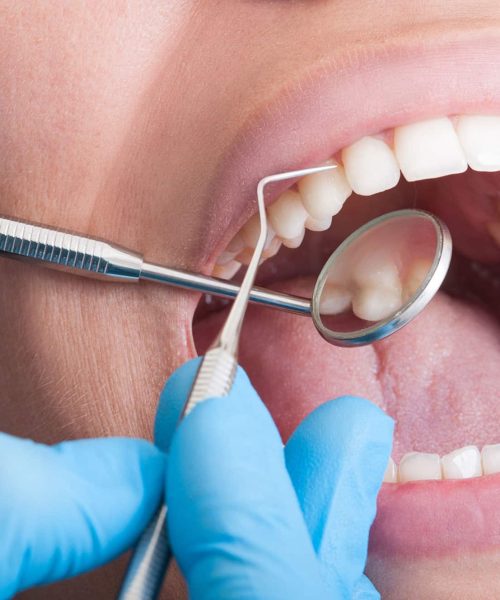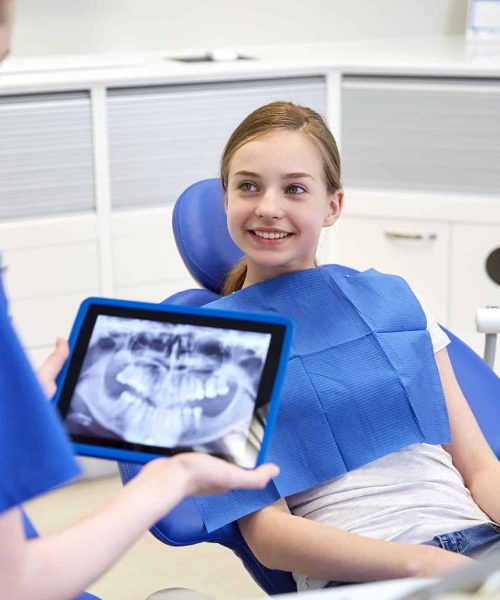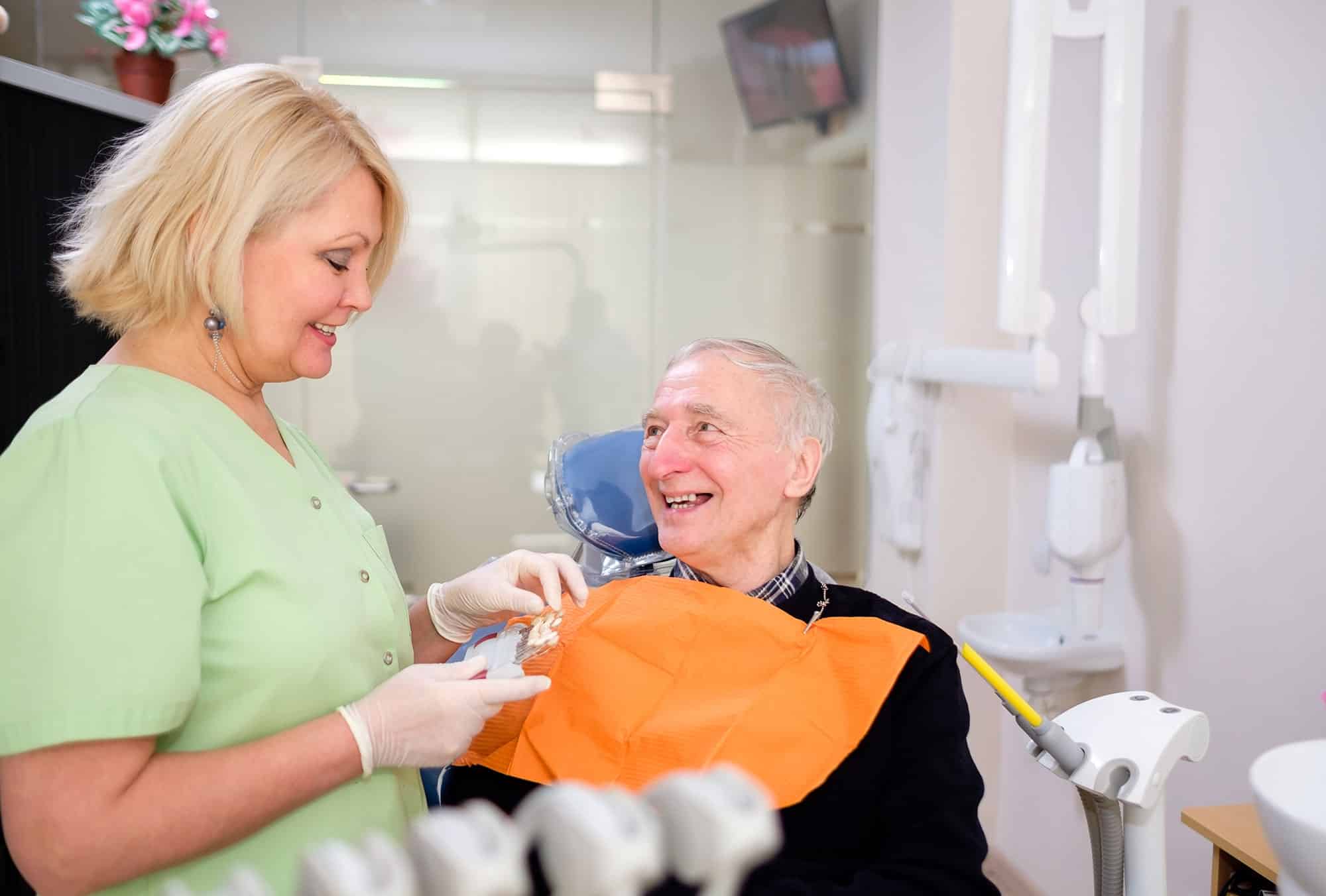Our general and family dentistry services include professional dental cleaning, x-rays, exams, and many other prevention services.


Periodontal disease and gingivitis occur when bacteria from plaque colonize the gingival (gum) tissue – either above or below the gum line. These bacteria colonies cause serious inflammation and irritation which in turn produce a chronic inflammatory response in the body. As a result, the body begins to systematically destroy gum and bone tissue, making the teeth shift, become unstable, or completely fall out. The pockets between the gums and teeth become deeper and house more bacteria which may travel via the bloodstream and infect other parts of the body. Regular dental cleanings prevent these symptoms.
A dental prophylaxis is a cleaning procedure performed to thoroughly clean the teeth. Prophylaxis is recommended twice annually during your regular dental visit, as a preventative measure to prevent periodontal disease and gingivitis.
Tartar (calculus) and plaque buildup, both above and below the gum line, can cause serious periodontal problems if left untreated. Even using the best brushing and flossing home-care techniques, it can be impossible to remove debris, bacteria and deposits from gum pockets. The experienced eye of a dentist using specialized dental equipment is needed in order to spot and treat problems such as tartar and plaque buildup.
It’s hard to feel confident about a smile marred by yellowing, stained teeth. Prophylaxis can rid the teeth of unsightly stains and return the smile to its former glory. Our gentle Dentists and staff at Your Neighborhood Dentist care about your health and smile, contact us today to schedule your appointment.
Periodontal disease is often signified by persistent bad breath (halitosis). Bad breath is generally caused by a combination of rotting food particles below the gum line, possible gangrene stemming from gum infection, and periodontal problems. The removal of plaque, calculus and bacteria noticeably improves breath and alleviates irritation.
Many health problems first present themselves to the dentist. Since prophylaxis involves a thorough examination of the entire oral cavity, the dentist is able to screen for oral cancer, evaluate the risk of periodontitis and often spot signs of medical problems like diabetes and kidney problems. Recommendations can also be provided for altering the home care regimen.

A comprehensive dental exam will be performed by your dentist at your initial dental visit. At regular check-up exams, your dentist and hygienist will perform the following:
Dental radiographs (X-rays) are essential, preventative, diagnostic tools that provide valuable information not visible during a regular dental exam. Dentists and dental hygienists use this information to safely and accurately detect hidden dental abnormalities and complete an accurate treatment plan. Without X-rays, problem areas may go undetected.
Dental X-rays may reveal:
Detecting and treating dental problems at an early stage can save you time, money, unnecessary discomfort, and your teeth!
We are all exposed to natural radiation in our environment. The amount of radiation exposure from a full mouth series of X-rays is equal to the amount a person receives in a single day from natural sources.
Dental X-rays produce a low level of radiation and are considered safe. Dentists take necessary precautions to limit the patient’s exposure to radiation when taking dental X-rays. These precautions include using lead apron shields to protect the body and using modern, fast film that cuts down the exposure time of each X-ray.
The need for dental X-rays depends on each patient’s individual dental health needs. Your dentist and dental hygienist will recommend necessary x-rays based on the review of your medical and dental history, dental exam, signs and symptoms, age consideration, and risk for disease.
A full mouth series of dental X-rays is recommended for new patients. A full series is usually good for three to five years. Bite-wing X-rays (X-rays of top and bottom teeth biting together) are taken at recall (check-up) visits and are recommended once or twice a year to detect new dental problems.


The best way to stay protected from oral cancer is to get annual oral cancer screenings. Most dentists perform an oral cancer exam during a regular dental checkup. The FDA-approved VELscope® offers dentists another examination tool to help detect oral cancer in its earliest stages. The VELscope® is a blue excitation lamp, which highlights precancerous and cancerous cell changes.
The VELscope® uses Fluorescence Visualization (FV) in an exciting new way. Essentially, bright blue light is shone into the mouth to expose changes and lesions that would otherwise be invisible to the naked eye. One of the biggest difficulties in diagnosing oral cancer is that its symptoms look similar to symptoms of less serious problems. The VELscope® System affords the dentist important insight as to what is happening beneath the surface.
The healthy soft tissue of the mouth naturally absorbs the VELscope® frequency of blue light. Healthy areas beneath the surface of the soft tissue show up green, and the problem areas become much darker.
Here are some of the advantages of using the VELscope® System:
The VELscope® examination literally takes only two or three minutes. It is a painless and noninvasive procedure that saves many lives every single year.
Here is a brief overview of what a VELscope® examination is like:
Initially, the dentist will perform a regular visual examination of the whole lower face. This includes the glands, tongue, cheeks and palate as well as the teeth. The dentist provides special eyewear to protect the integrity of the retinas. The lights in the room are dimmed to allow a clear view of the oral cavity.
Lesions and other indicators of oral cancer are easily noticeable because they appear much darker under the specialized light.
If symptoms are noted, the dentist might take a biopsy to determine whether or not this is oral cancer. The results of the biopsy dictate the best course of action from there. Otherwise, another oral cancer screening is performed in one year’s time.
If you have any questions or concerns about oral cancer screening or the VELscope® system, please contact our office.

A preventive program is a cooperative effort by the patient, dentist, and dental staff to preserve the natural dentition and supporting structures by preventing the onset, progress, and recurrence of dental diseases and conditions.
Preventing dental disease starts at home with good oral hygiene and a balanced diet. It is continued in the dental office by the efforts of your dentist and dental hygienist to promote, restore, and maintain your oral health.
Prevention also includes:
Sealants and fluoride are also great preventive treatments that help protect the teeth.
Prevention helps avoid serious and costly dental problems and is the key to having a healthy, confident, beautiful smile.

